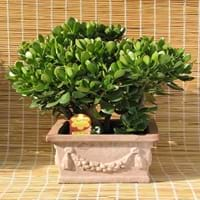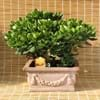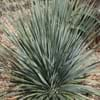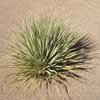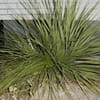Life Span
Perennial
Perennial
Type
Cactus or Succulent
Flowering Plants
Origin
Southern Africa, Madagascar, Asia
Not Available
Types
Crassula
Aconitum napellus
Number of Varieties
Not Available
Habitat
Dry areas, Hillside, Semi arid regions, Semi desert
Damp shady woods, meadows
USDA Hardiness Zone
11-12
12-15
Sunset Zone
Not Available
21, 22, 23, 24
Habit
Clump-Forming
Oval or Rounded
Minimum Height
Not Available
Minimum Width
Not Available
Flower Color
White, Pink, Magenta
Yellow
Flower Color Modifier
Not Available
Not Available
Fruit Color
Non Fruiting Plant
Green
Leaf Color in Spring
Light Green, Blue Green, Gray Green, Dark Green
Not Available
Leaf Color in Summer
Light Green, Blue Green, Gray Green, Dark Green
Not Available
Leaf Color in Fall
Light Green, Blue Green, Gray Green, Dark Green
Not Available
Leaf Color in Winter
Light Green, Blue Green, Gray Green, Dark Green
Not Available
Leaf Shape
Succulent
Compound
Plant Season
Spring, Summer, Fall, Winter
Not Available
Sunlight
Full Sun, Partial Sun
Not Available
Growth Rate
Medium
Very Slow
Type of Soil
Loam, Sand
Not Available
The pH of Soil
Neutral, Alkaline
Not Available
Soil Drainage
Well drained
Not Available
Bloom Time
Indeterminate
Spring
Repeat Bloomer
No
Not Available
Tolerances
Cold climate, Dry soil, Heat Tolerance
Not Available
Where to Plant?
Container, Ground, Pot
Ground
How to Plant?
Leaf Cutting, Stem Planting
reseeds
Plant Maintenance
Medium
Medium
Watering Requirements
Do Not over Water, Do not water frequently, Does not require lot of watering, Keep ground moist, Medium, Never Over-water, Water when top layer of soil becomes dry
Do not let dry out between waterings
In Summer
Lots of watering
Lots of watering
In Spring
Moderate
Moderate
In Winter
Average Water
Average Water
Soil pH
Neutral, Alkaline
Not Available
Soil Type
Loam, Sand
Not Available
Soil Drainage Capacity
Well drained
Not Available
Sun Exposure
Full Sun, Partial Sun
Not Available
Pruning
Prune if you want to improve plant shape, Remove damaged leaves, Remove dead leaves
Remove damaged leaves, Remove dead branches, Remove dead leaves
Fertilizers
All-Purpose Liquid Fertilizer, fertilize in spring, Nitrogen, Phosphorous, Potassium, Put diluted fertilizers, Water soluble fertilizers
All-Purpose Liquid Fertilizer
Pests and Diseases
Mealybugs, Red blotch, Scale, Spider mites
Red blotch
Plant Tolerance
Cold climate, Dry soil, Sun
Drought
Flowers
Showy
Not Available
Flower Petal Number
Single
Single
Fragrant Flower
No
Not Available
Fragrant Fruit
No
Not Available
Fragrant Leaf
No
Not Available
Fragrant Bark/Stem
No
Not Available
Showy Foliage
Yes
Not Available
Showy Bark
No
Not Available
Foliage Texture
Bold
Bold
Foliage Sheen
Matte
Not Available
Invasive
No
Not Available
Self-Sowing
No
Not Available
Attracts
Butterflies
Hummingbirds
Allergy
no allergic reactions
poisonous if ingested, Toxic
Aesthetic Uses
Beautification, Landscape Designing, Showy Purposes
Not Used For Aesthetic Purpose
Beauty Benefits
Not Available
Not Available
Environmental Uses
Air purification, Food for insects, Indoor Air Purification, Very little waste
Air purification
Medicinal Uses
Vomiting
Analgesic, Anodyne, Diaphoretic, Homeopathy, Used as a sedative
Part of Plant Used
Leaves
Root
Other Uses
Decoration Purposes, Showy Purposes, Used as Ornamental plant, Used for its medicinal properties
Not Available
Used As Indoor Plant
Yes
No
Used As Outdoor Plant
Yes
Yes
Garden Design
Container, Houseplant, Mixed Border, Rock Garden, Wall
Not Available
Botanical Name
CRASSULA
Aconitum
Common Name
Jade Plant, Lucky Plant, Money Tree
aconite, monkshood, wolf's bane, leopard's bane, mousebane, women's bane, devil's helmet, Queen of all Poisons, blue rocket
In Hindi
जेड पौधा
बच्छनाभ
In German
Geldbaum
Eisenhut
In French
Crassula ovata
Queen of all Poisons
In Spanish
Crassula ovata
Queen of all Poisons
In Greek
crassula ovata
Queen of all Poisons
In Portuguese
crassula ovata
Queen of all Poisons
In Polish
Crassula ovata
Tojad
In Latin
Crassula ovata
Queen of all Poisons
Phylum
Magnoliophyta
Tracheobionta
Class
Magnoliopsida
Magnoliopsida
Order
Saxifragales
Ranunculales
Family
Crassulaceae
Cactaceae
Clade
Angiosperms, Core eudicots, Eudicots
Angiosperms, Eudicots
Tribe
Not Available
Delphinieae
Subfamily
Crassuloideae
Not Available
Number of Species
Not Available
Difference Between Crassula Ovata and Queen of all Poisons
If you are confused whether Crassula Ovata or Queen of all Poisons are same, here are some features about those plants to help you choose better. Many people think that these two plants have the same characteristics, but one can see Crassula Ovata and Queen of all Poisons Information and learn more about it. Fertilizers required for proper growth of Crassula Ovata are All-Purpose Liquid Fertilizer, fertilize in spring, Nitrogen, Phosphorous, Potassium, Put diluted fertilizers and Water soluble fertilizers, whereas for Queen of all Poisons fertilizers required are All-Purpose Liquid Fertilizer. Hence, one should know the basic difference between Crassula Ovata and Queen of all Poisons if you are planning to have them in your garden to enhance its beauty.
<
Flowering PlantsImportance of Crassula Ovata and Queen of all Poisons
Want to have the most appropriate plant for your garden? You might want to know the importance of Crassula Ovata and Queen of all Poisons. Basically, these two plants vary in many aspects. Compare Crassula Ovata and Queen of all Poisons as they differ in many characteristics such as their life, care, benefits, facts, etc. Every gardener must at least have the slightest clue about the plants he wants to plant in his garden. Compare their benefits, which differ in many ways like facts and uses. The medicinal use of Crassula Ovata is Vomiting whereas of Queen of all Poisons is Analgesic, Anodyne, Diaphoretic, Homeopathy and Used as a sedative. Crassula Ovata has beauty benefits as follows: Not Available while Queen of all Poisons has beauty benefits as follows: Not Available.
Compare Facts of Crassula Ovata vs Queen of all Poisons
How to choose the best garden plant for your garden depending upon its facts? Here garden plant comparison will help you to solve this query. Compare the facts of Crassula Ovata vs Queen of all Poisons and know which one to choose. As garden plants have benefits and other uses, allergy is also a major drawback of plants for some people. Allergic reactions of Crassula Ovata are no allergic reactions whereas of Queen of all Poisons have poisonous if ingested and Toxic respectively. Having a fruit bearing plant in your garden can be a plus point of your garden. Crassula Ovata has no showy fruits and Queen of all Poisons has no showy fruits. Also Crassula Ovata is not flowering and Queen of all Poisons is not flowering . You can compare Crassula Ovata and Queen of all Poisons facts and facts of other plants too.
